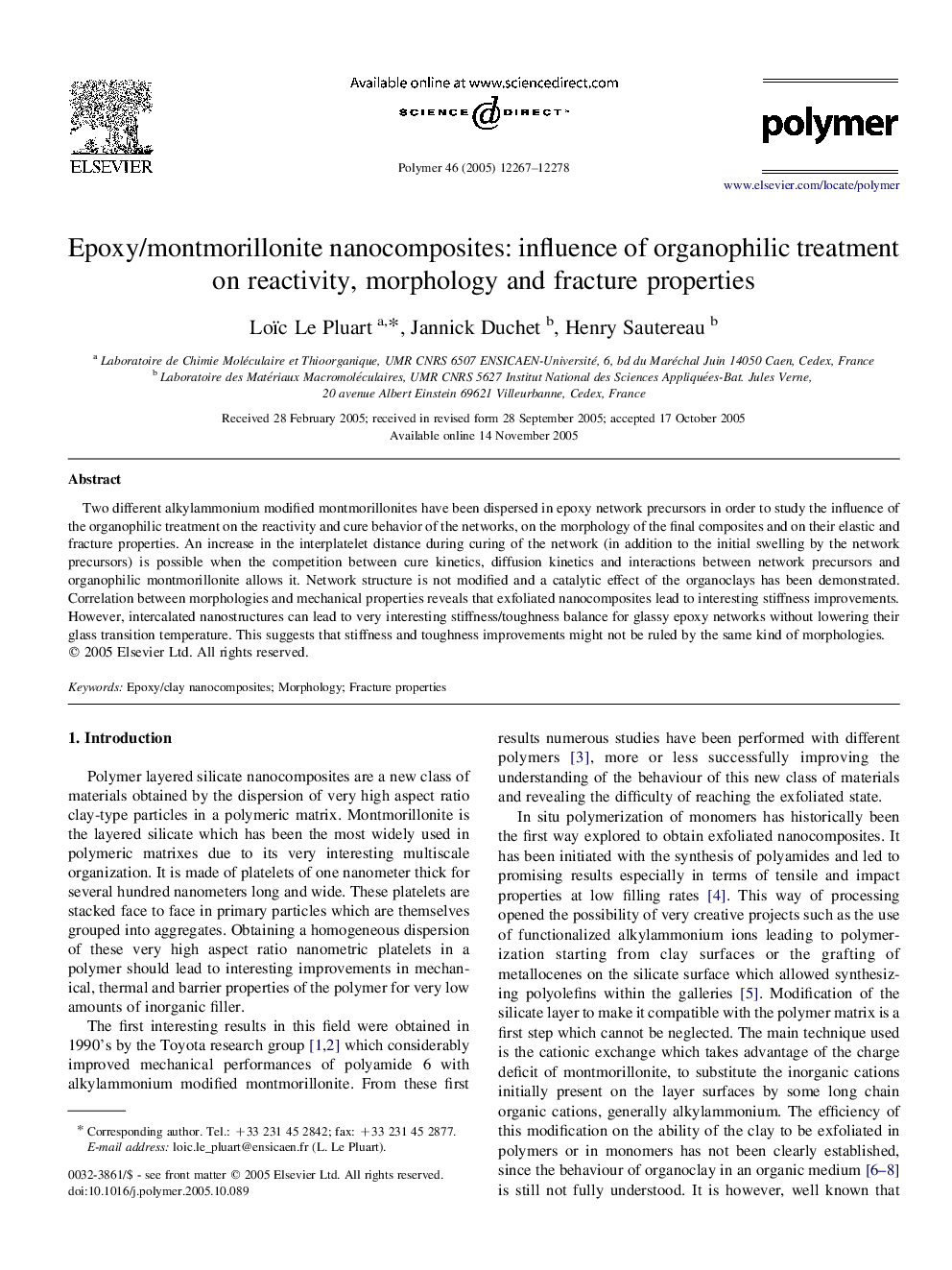| Article ID | Journal | Published Year | Pages | File Type |
|---|---|---|---|---|
| 5189626 | Polymer | 2005 | 12 Pages |
Abstract
Two different alkylammonium modified montmorillonites have been dispersed in epoxy network precursors in order to study the influence of the organophilic treatment on the reactivity and cure behavior of the networks, on the morphology of the final composites and on their elastic and fracture properties. An increase in the interplatelet distance during curing of the network (in addition to the initial swelling by the network precursors) is possible when the competition between cure kinetics, diffusion kinetics and interactions between network precursors and organophilic montmorillonite allows it. Network structure is not modified and a catalytic effect of the organoclays has been demonstrated. Correlation between morphologies and mechanical properties reveals that exfoliated nanocomposites lead to interesting stiffness improvements. However, intercalated nanostructures can lead to very interesting stiffness/toughness balance for glassy epoxy networks without lowering their glass transition temperature. This suggests that stiffness and toughness improvements might not be ruled by the same kind of morphologies.
Keywords
Related Topics
Physical Sciences and Engineering
Chemistry
Organic Chemistry
Authors
Loïc Le Pluart, Jannick Duchet, Henry Sautereau,
